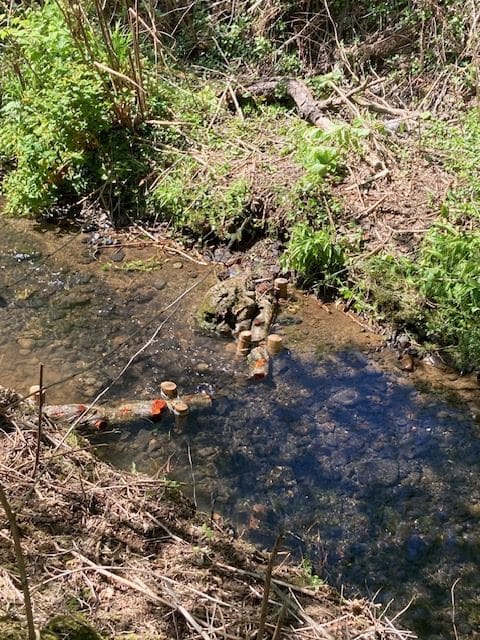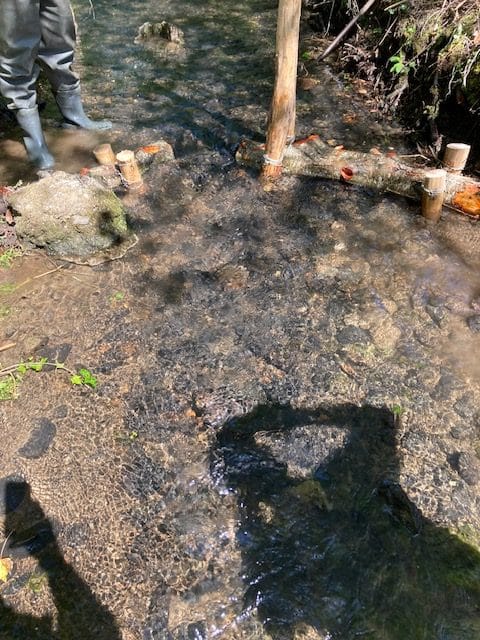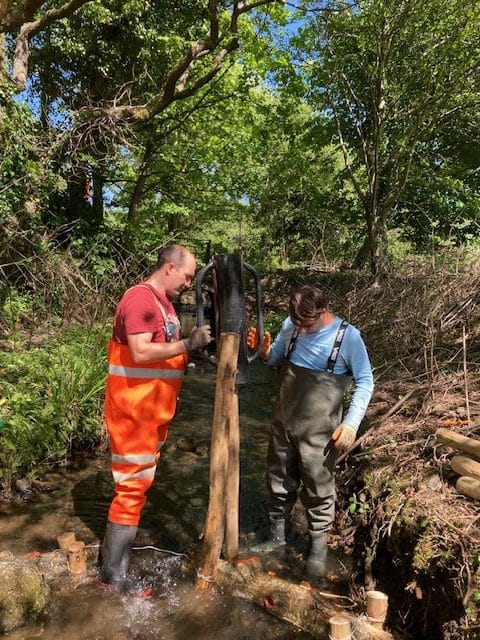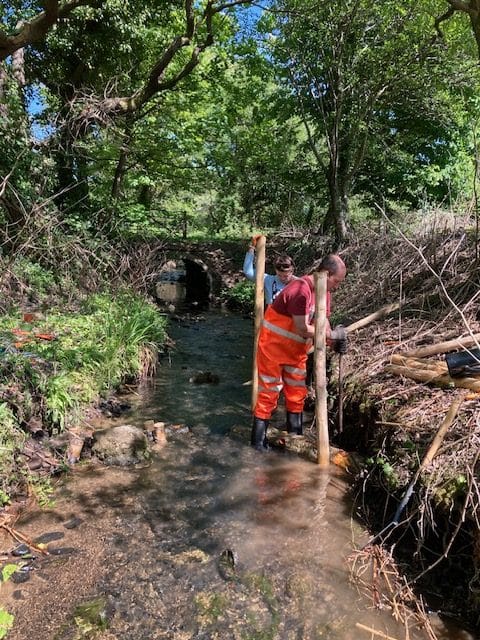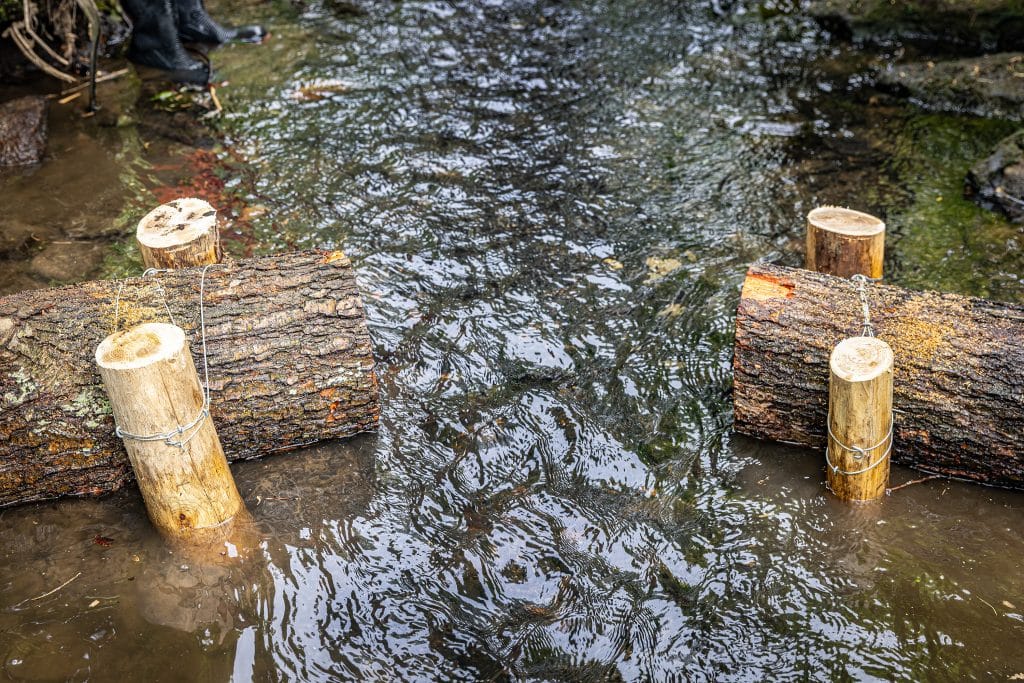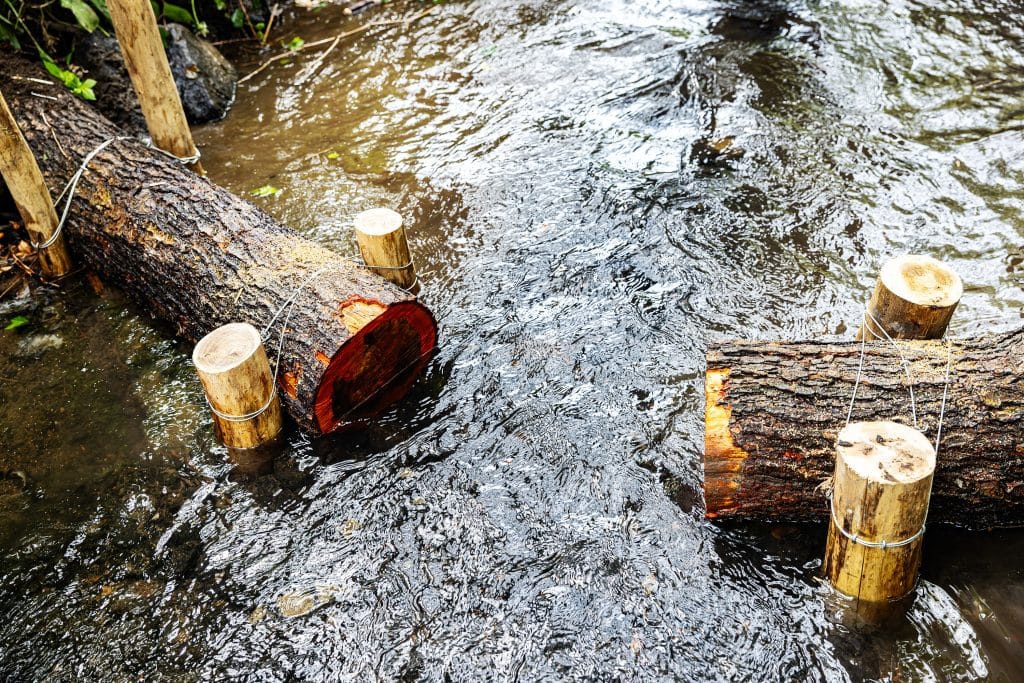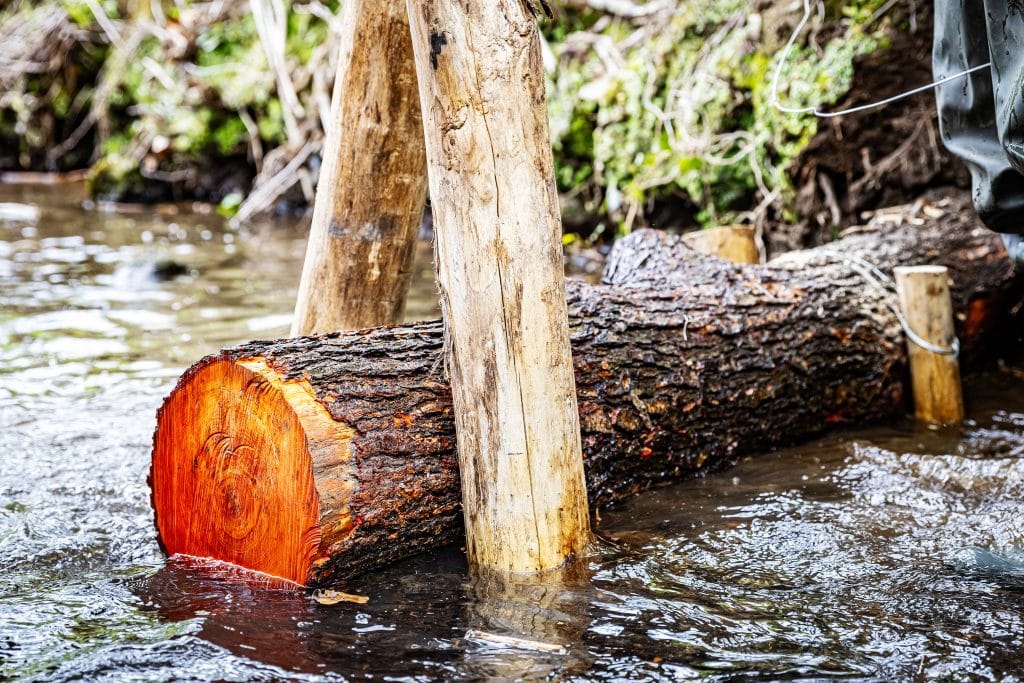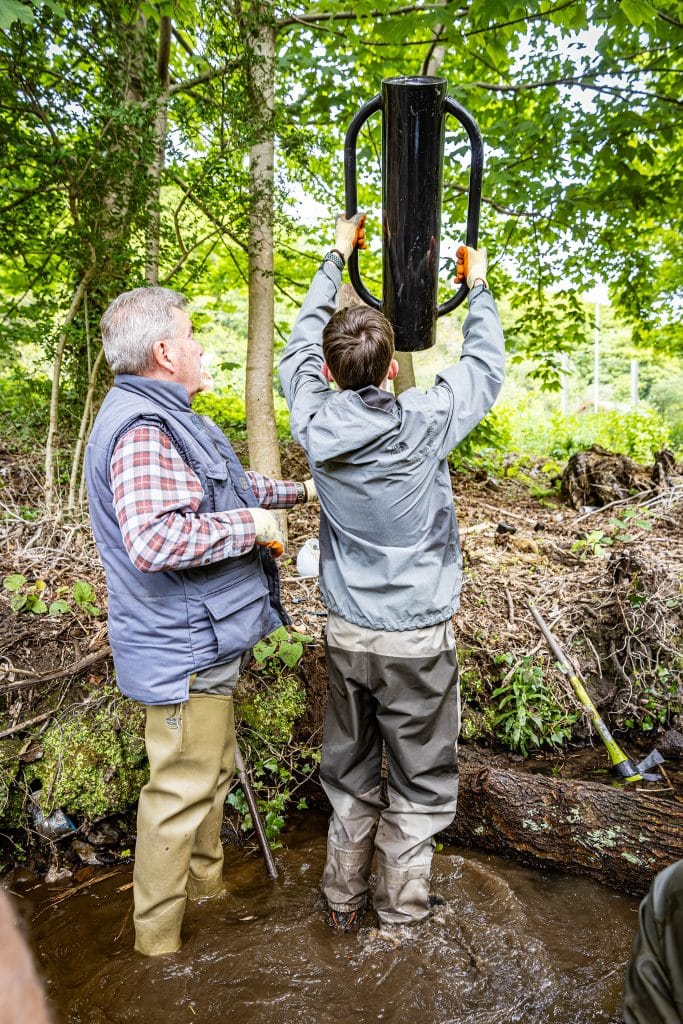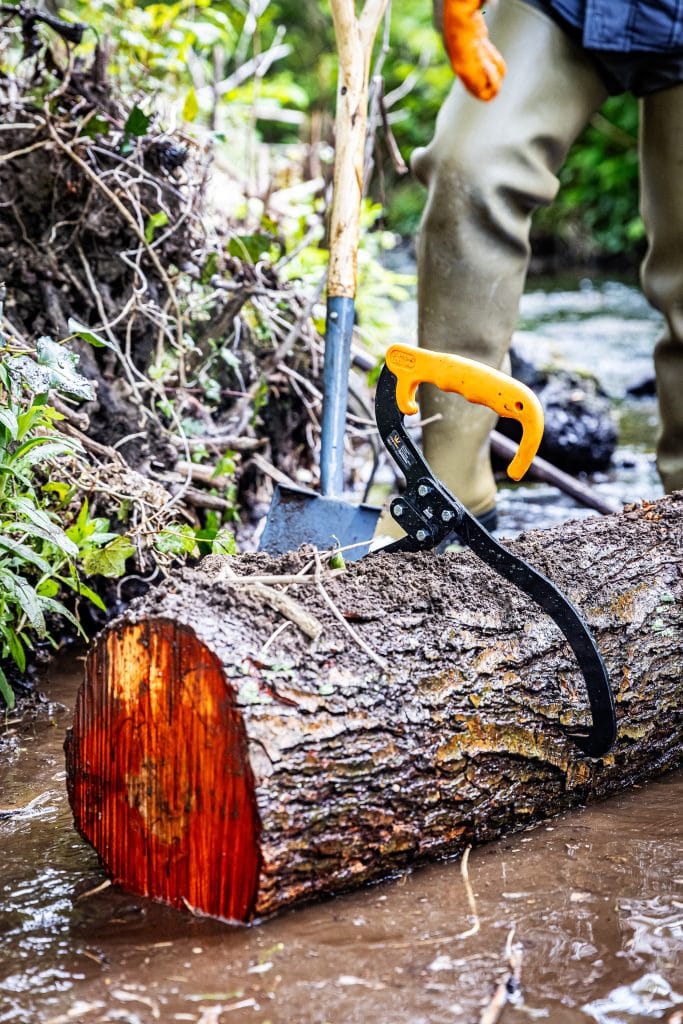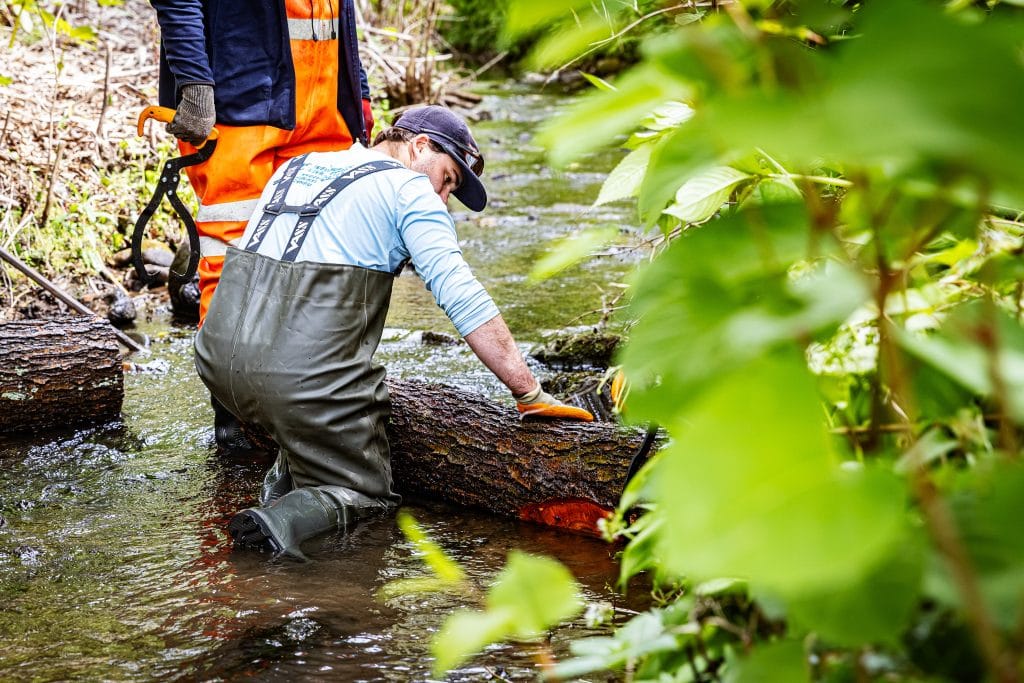The Nant Clais Restoration Project is a three-year partnership project that aims to restore Nant Clais brook, a tributary of Afon Afan near Cwmafan which runs parallel to the B4286 near the Ynys Park. West Wales Rivers Trust is delivering this project with kind support from Dwr Cymru, Natural Resources Wales and Afan Valley Angling and Conservation Club.
The project is a result of habitat restoration opportunities identified by Afan Valley Angling and Conservation Club, Natural Resources Wales, and Swansea University. It aims to clean up the area with numerous litter picks and tackle the spread of invasive non-native plant species Japanese Knotweed & Himalayan Balsam whilst enhancing the ecosystem and productivity of the water course.
The second stage is to enable increased light to reach the channel by coppicing of the selective trees whilst maintaining dabbled shade. This will increase instream productivity & invertebrate numbers, and diversify bankside vegetation.
The next stage will be to restore flow diversity throughout the stream by the installation of flow deflectors and woody material structures together with bank revetment in the shape of possibly Willow Spiling that is the traditional technique of preventing soil eroding from riverbanks. Finally we plan to introduce clean spawning gravel to be utilised by Brown Trout, Sea Trout and Salmon.
The project aims to boost biodiversity locally, through the restoration of the river and riparian habitat, while engaging local people with their local watercourses. Creating opportunities to learn & become part of the solution to restoring ecosystems and biodiversity.
Balsam Bash 14/06/24





Following a successful but not yet completed invasive species treatment program which resulted in significant knockdown of JKW, the next part of the restoration was now ready to progress. In early May this year (2025) the final stages of the restoration started. Bank revetment and installation of wooden structures in the stream was the plan to create a complex and varied habitat. The structure designs would encourage the water flow to scour out areas suitable for egg laying and cover for the smaller fish and invertebrates. These structures also add complexity to the channel, helping to create pools and gravel beds and they support invertebrate life by trapping nutrients for key species groups such as mayflies, stoneflies and caddis species. These also provide additional habitat for fish, and help provide shade, shelter from high velocity flows, sites for feeding, spawning and nursery areas as well as refuges from predators. WWRT and a number of our club volunteers set to work on the first stages. The inverted “V” structures pinch the flow and create increased velocity in the centre. During heavy rainfall and flood conditions, the water tops the “V” and scours a deeper section behind the logs. In addition to the “V” structures made from Alder and Chestnut staves, bank deflectors were also constructed and covered with Willow brash to create cover. The pictures below some of the structures completed however there are more planned.



